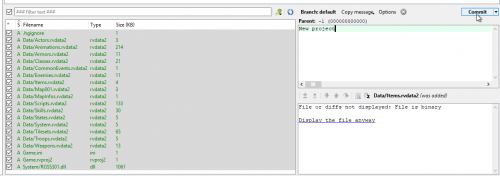
On refactor, sometimes I add the name of refactor used (i.e “refactor: extract method”). In red, I copy the name of the test as part of the commit comment. I prefix the comment with “red:”, “green” or “refactor:”.

To be efficient with that, I don’t worry much about the commit comment. I usually commit on red (test failing), on green (test passing) and eventually on refactor. It serves as documentation for others and saves me time when I want to jump back to a previous state. I use the VCS to keep track of my TDD flow. The filter bar also admits filter commands. For example to search for commits made by user with name John write “user(‘john’)” on the filter bar. The second most common operation we do with TortoiseHG is searching for commits. The “filter bar” must be enabled for that. Then we can write any word that we want to search for in the commits comments. That window shows only commits where the selected file was changed. Another useful item in the menu is the “File History” of each file, which opens up in a new window. The same menu also gives the choice to discard changes made on the selected file (the “Revert” menu item). (unversioned file) pops over the menu with the option to add. Using the right mouse button over the pink file This is one way we can add existing source files into the repository or files that we create later. If we need to commit the change into a new branch, we can do that clicking on the label “Branch: default” right on top of the comment area.įrom the “commit view” it’s also possible to track new files. Once the commit comment is introduced we just need to click on the “Commit” button on the right hand side. See the “Copy message” dropdown right on top of the comment area. Text from previous comments can be retrieved in case we want to reuse the same comment. If there has been changes while this view was displayed, we need to refresh ( blue circle button in the middle of the screen) in order toįinally, the commit needs a comment that goes into the comment area. From this view we can see changed files and their contents.

To display this view click on the green tick button on the top. The “commit view”, is where pending changes (uncommitted) can be seen. That can be done through the “New Repository” in the “File” menu. Select “Commit” on the left hand side and introduce some username on the right. Open the settings window through the “File” menu. So let’s open up the workbench now. If it’s the first time we open the workbench we must tell TortoiseHG what is our username. We are going to use the TortoiseHG Workbench. It’s got the same GUI in Linux, MacOS and Windows. And TortoiseHG is an excellent client app. A version control system should be easy to use, at least when you just need to perform basic tasks.


 0 kommentar(er)
0 kommentar(er)
